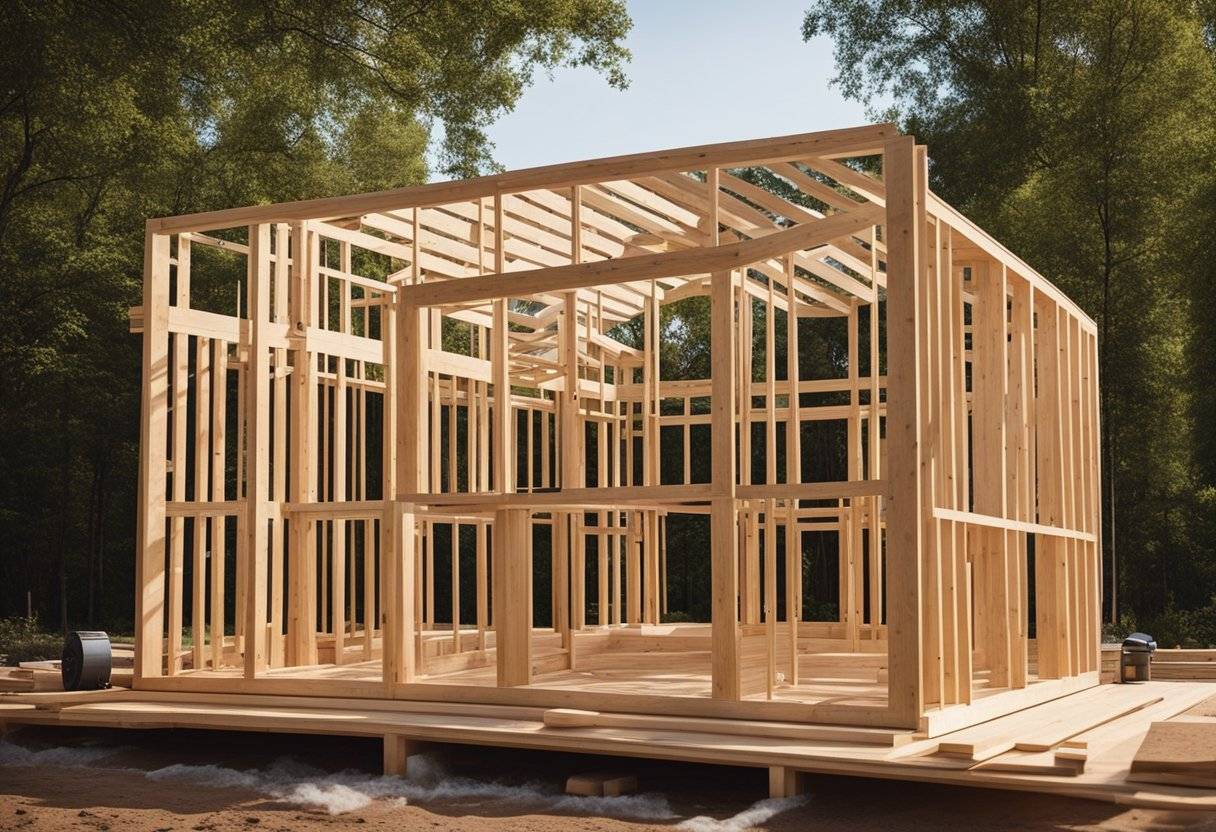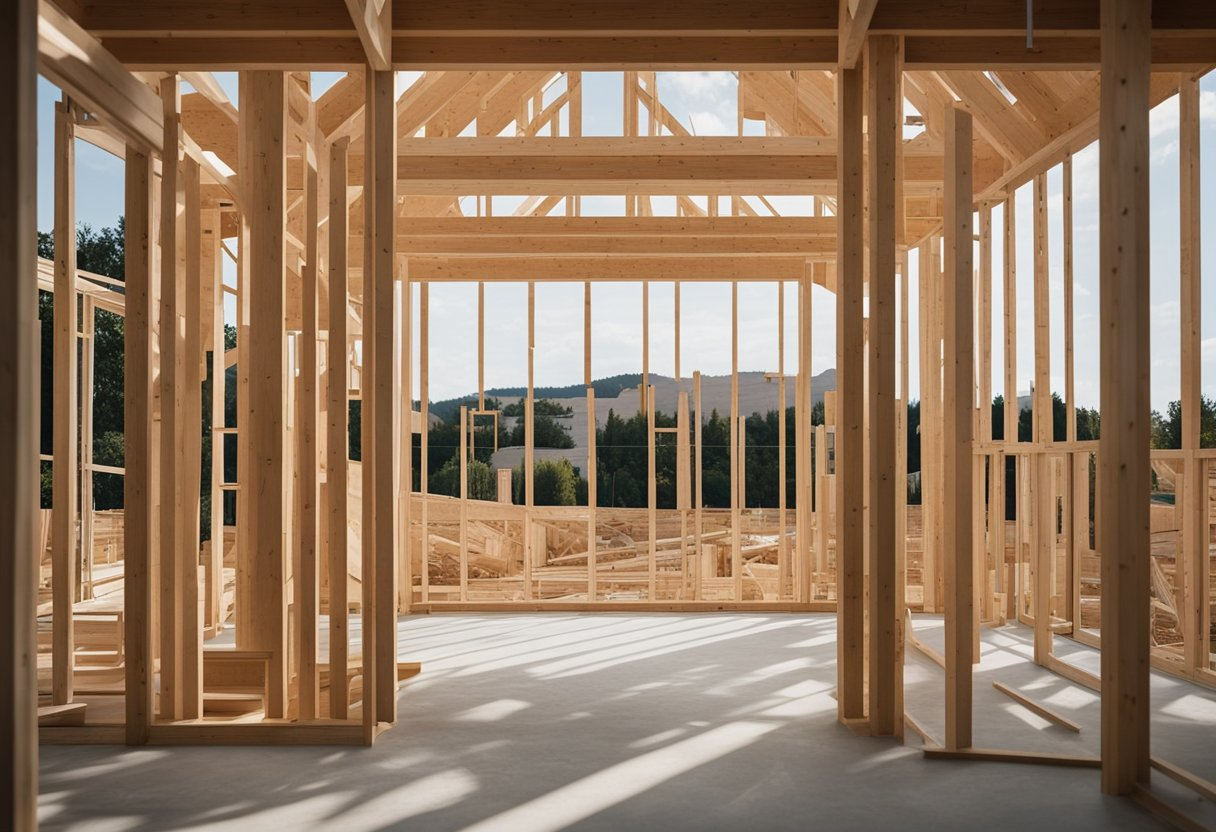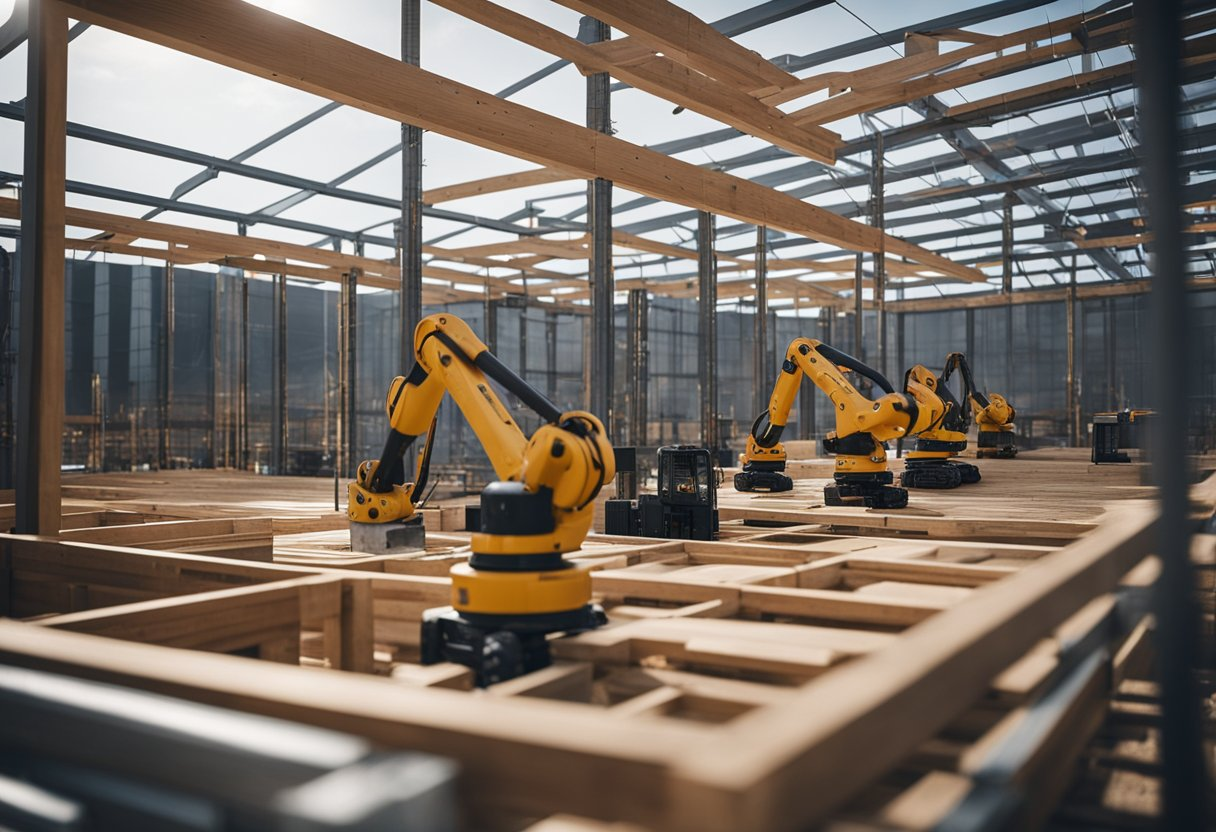Innovative House Framing Techniques for Construction Project
Innovative House Framing Techniques for Construction Project
From Raheel Bhatti
I'm raising money for a cause I care about, but I need your help to reach my goal! Please become a supporter to follow my progress and share with your friends.
Subscribe to follow campaign updates!
More Info
Innovative house framing techniques are transforming the way construction projects are approached today. Builders are increasingly adopting methods that prioritize not only structural integrity but also sustainability and energy efficiency. These modern framing techniques can greatly reduce material waste and enhance the overall performance of a building.

With advancements in technology and a growing awareness of environmental impacts, the construction industry is exploring frameworks that utilize resources more efficiently. Innovations such as advanced wood framing and prefabricated components can streamline the building process, reduce costs, and improve energy performance. By integrating these methods, framing companies and professionals can deliver homes that meet contemporary demands while also addressing ecological concerns.
As the industry evolves, embracing these innovative framing techniques will enable builders to navigate the challenges of modern construction. Homeowners can expect not only aesthetically pleasing designs but also homes that are more sustainable and cost-effective in the long run.
Advancements in Building Materials

Recent innovations in building materials focus on enhancing structural integrity, promoting sustainability, and improving energy efficiency. These advancements are critical to modern construction practices, as they respond to both environmental challenges and the demand for more robust, efficient materials.
Engineered Wood and Innovative Wood Products
Engineered wood products, such as Laminated Veneer Lumber (LVL) and Cross-Laminated Timber (CLT), have transformed traditional wood framing. These materials are designed by bonding multiple layers of wood together, which increases strength and stability while reducing waste.
Key benefits include:
· High Strength-to-Weight Ratio: This allows for larger structural spans.
· Sustainable Sourcing: Many engineered woods come from renewable resources, supporting eco-friendly initiatives.
· Versatility: They can be used in beams, floors, and walls, making them suitable for various building types. Suitable for being used in drywall repair san diego projects that require special access for drywall cuts and installations.
The use of engineered wood products contributes to both structural durability and sustainability in construction.
Eco-Friendly Materials and Sustainability
Eco-friendly materials focus on minimizing environmental impact while ensuring performance. Notable materials include:
· Recycled Steel: Strong and reducing waste, it offers durability and resistance to corrosion.
· Cellulose Insulation: Made from recycled paper products, it provides excellent thermal performance and is biodegradable.
· Bamboo: A rapidly renewable resource that offers comparable strength to traditional woods.
These materials not only encourage sustainability but also contribute to lower energy costs and carbon footprints. By integrating such eco-friendly options, builders improve the lifecycle of structures.
Self-Healing Concrete and Biodegradable Materials
Self-healing concrete represents a breakthrough in construction materials. This innovation incorporates special additives that allow cracks to seal self-repairing through chemical reactions with moisture and carbon dioxide.
Benefits of self-healing concrete include:
· Longevity: Reduces maintenance and repairs over time.
· Reduced Lifecycle Costs: Extends lifespan, which benefits both cost and sustainability.
Additionally, biodegradable materials are becoming prominent in construction. These materials break down naturally, often made from organic substances. Examples include certain hemp-based products and composites, which offer an eco-friendly alternative, reducing waste in landfills.
These advancements illustrate how construction is evolving with a focus on sustainability and efficiency.
Technological Integration in Construction

The integration of advanced technologies in construction enhances efficiency, accuracy, and collaboration across projects. Building Information Modeling (BIM) and Augmented Reality (AR) play significant roles in modernizing workflows and improving project outcomes.
Building Information Modeling (BIM)
BIM is a transformative tool that creates digital representations of physical and functional characteristics of buildings. This technology allows for detailed 3D modeling, which facilitates improved project visualization and coordination among stakeholders.
Key benefits include:
· Enhanced Collaboration: Teams can share real-time updates, reducing misunderstandings.
· Cost Efficiency: Predictive analytics in BIM help in identifying potential budget overruns early.
· Clash Detection: Early identification of design conflicts minimizes costly changes during construction.
BIM's integration with project management software further streamlines workflows, making it essential for innovative house framing and construction projects.
Augmented Reality (AR) in Construction Planning
AR technology overlays digital information onto the real-world environment, enabling stakeholders to visualize projects before they are built. This capability is particularly impactful during the planning and design phases.
Benefits of AR include:
· Interactive Visualization: Users can explore 3D models on-site, allowing for informed decision-making.
· Training and Safety: AR can provide immersive training experiences, improving workforce safety and preparedness.
· Design Validation: Stakeholders can assess design elements in real time, facilitating immediate adjustments.
When combined with tools like drones and AI, AR enhances construction precision and project execution efficiency.
Energy Efficiency and Environmental Considerations
In the quest for sustainable construction, energy efficiency and environmental factors play crucial roles. Innovative insulation techniques, green building practices, and the impact of climate change drive contemporary approaches. Each aspect contributes to reducing energy consumption and enhancing sustainability in construction projects.
Innovative Insulation Techniques
Modern insulation techniques are fundamental for maximizing energy efficiency in buildings. Advanced framing methods allow for better insulation coverage by reducing the number of framing members, thereby minimizing thermal bridging. For instance, using high-performance spray foam or cellulose insulation can significantly lower heating and cooling costs.
Insulation strategies often focus on R-values, which measure thermal resistance. Incorporating materials with higher R-values ensures superior energy performance. Fabrics such as mineral wool and foam boards also offer improved sound dampening properties while contributing to overall sustainability.
Green Building and Green Roofs
Green building practices prioritize environmentally friendly materials and construction methods. This approach reduces waste and minimizes the ecological footprint of new structures. Sustainable materials include recycled products, reclaimed wood, and low-VOC paints, which promote better indoor air quality.
Green roofs are an innovative element in this approach. They help manage stormwater, improve insulation, and reduce urban heat islands. Vegetated roofs can also support biodiversity by providing habitats for various species, contributing positively to the surrounding environment.
Impact of Climate Change on Construction Practices
Climate change significantly influences construction practices, necessitating adaptations in design and materials. Builders often consider resilience against extreme weather events and rising temperatures. Construction techniques now emphasize durability and sustainability to withstand these challenges.
Innovative strategies, such as passive solar design, leverage natural sunlight for heating and cooling. Furthermore, using materials that resist moisture helps prevent mold and structural degradation. These considerations ensure that new buildings are not only energy-efficient but also prepared for future climate conditions.
Modern Construction Methodologies
Modern construction methodologies emphasize efficiency, safety, and adaptability in building practices. Innovations such as prefabrication and modular construction streamline the building process, while advancements like 3D printing offer customizable options. Seismic safety remains a crucial consideration in construction, ensuring structures withstand environmental challenges.
Prefabrication and Modular Construction
Prefabrication involves the manufacturing of building components in a controlled factory setting before transporting them to the construction site for assembly. This method reduces construction time, minimizes waste, and ensures high quality due to stringent factory-quality controls.
Modular construction takes this a step further by creating entire sections of buildings off-site. These modules are then assembled on-site. Key benefits include reduced labor costs, quicker construction timelines, and enhanced sustainability.
Additionally, both methods improve safety by minimizing on-site activities, reducing exposure to hazardous conditions. They provide a streamlined load path, distributing stresses effectively within the structure.
Seismic Safety in Construction
Seismic safety in construction addresses the need for buildings to withstand earthquakes. This necessity is particularly vital in regions prone to seismic activity. Techniques such as base isolation and energy dissipation systems are implemented to enhance a structure’s resilience.
Base isolation systems allow buildings to move independently of ground motion, reducing the forces transferred to the frame. Energy dissipation systems absorb and redistribute seismic energy, minimizing structural damage.
Utilizing materials like reinforced concrete or steel frames also supports load paths during seismic events. This ensures that forces are efficiently transferred throughout the building, maintaining stability and structural integrity.
3D Printing in Custom Design and Construction
3D printing technology transforms traditional construction methods by allowing for the on-demand production of building components. This enables highly customizable designs, reducing waste through precise material usage.
Homes can be printed layer by layer using concrete and other composite materials, significantly reducing labor costs and construction time. Companies like Apis Cor have demonstrated the feasibility of printing entire houses swiftly and efficiently.
Moreover, this methodology facilitates complicated architectural features that may be challenging to achieve with conventional framing methods. 3D printing supports innovative designs while promoting sustainability and cost-effectiveness in construction projects.
Campaign Wall
Join the Conversation
Sign in with your Facebook account or email.
